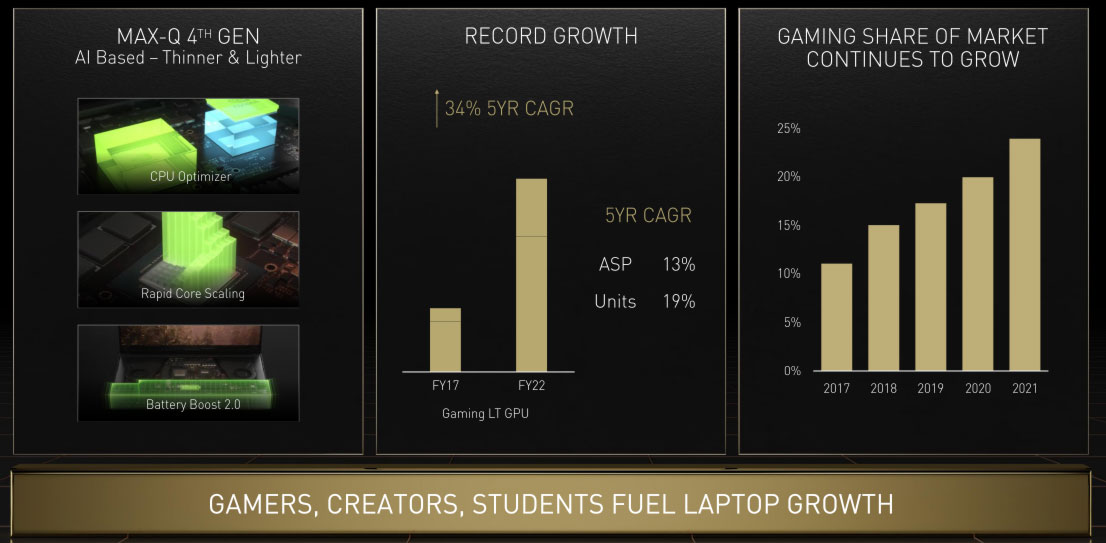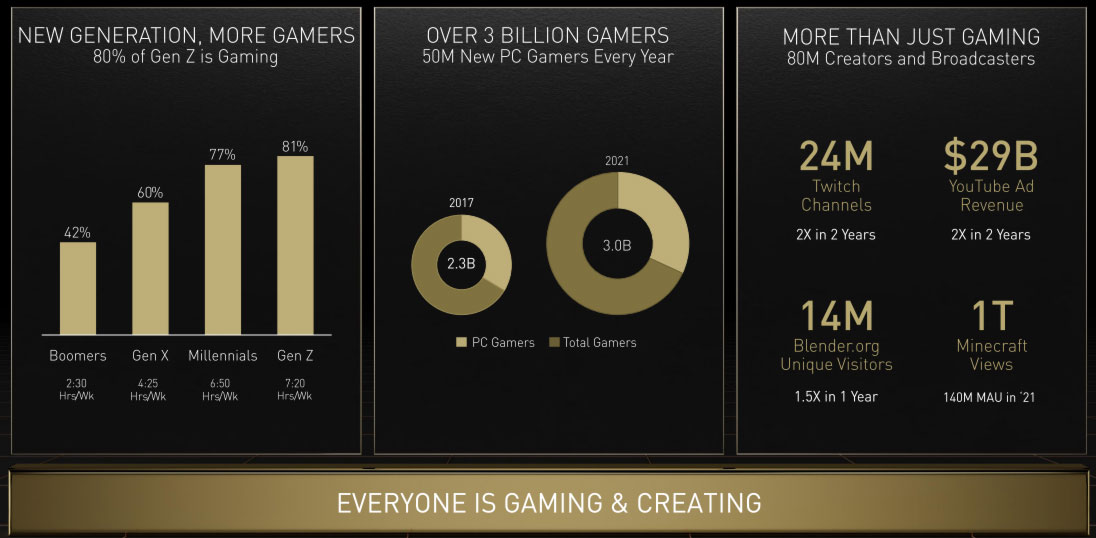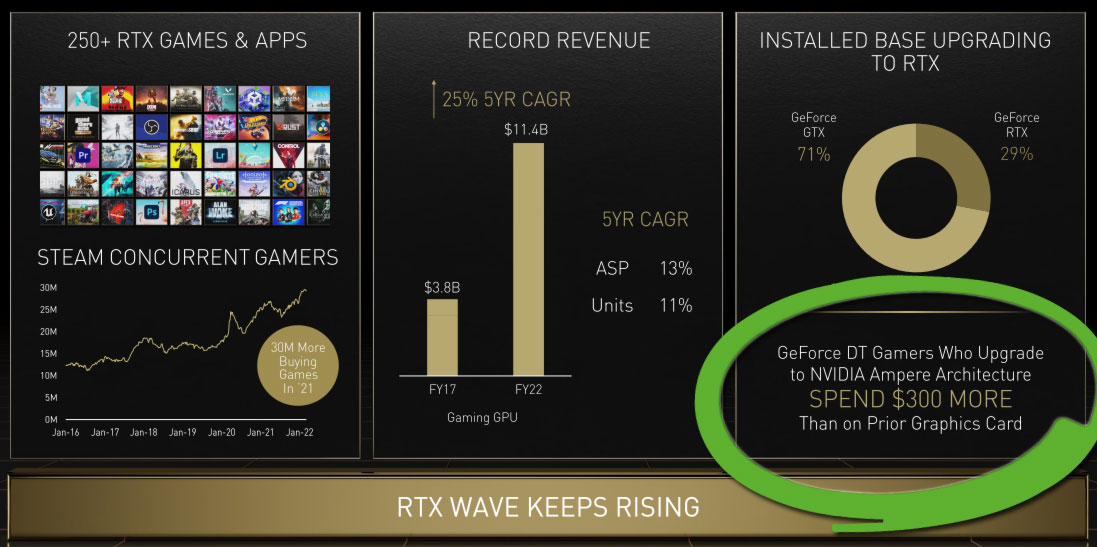Nvidia GPU Upgraders Are Paying $300 More Than Previous Gen Cards
Nvidia's Annual Investor Day presentation contains many illuminating facts, figures and trends. The gaming segment, still Nvidia's biggest money spinner, is of particular interest to our readers. Among the slides regarding the gaming graphics business, Nvidia reports GeForce GPU average selling prices (ASPs) went up by 13% per annum over the last half decade. Moreover, it boasts to investors that desktop Ampere generation (GeForce RTX 30 series) upgraders spend on average $300 more than they did on their previous gen GPU. This might make investors happy, but it isn't so great for the majority of PC DIYers, enthusiasts and gamers who have been stuck between a rock and a hard place for many months.
As well as kicking off its GTC Conference on Tuesday, and announcing some very potent GPUs and CPUs for enterprise, Nvidia's Annual Investor Day ran its course. Heavyweight financial publications and investors haven't been hugely impressed by either events, though, as anticipatory share price gains appear to have been dropping away over recent trading hours.


In the above slides you can see that Nvidia has enjoyed both record revenue from gaming GPUs as a whole, and record growth in gaming laptop GPUs. Both these are impressive and in both cases ASPs are up 13% per year, as per our headline. In terms of shipments the total market has absorbed around 11% more products shipped per year over the same five years. Laptop growth is even more impressive.
We seem to be clearly spending too much on Ampere upgrade GPUs as Nvidia highlights this trend disruption in capital letters in its presentation. The emphasis implies that it might be hard to believe, but it is true, gamers really are spending this much more than they did on their prior GPU. Moreover, the "RTX wave keeps rising," asserts the green team.
The green team's gaming business is doing great right now. Nvidia asserts that 80% of Gen Z is gaming, for example, and there are 50 million new PC gamers joining in every year (over the last five years). Nvidia is proud of the adoption of RTX technologies across the games industry, its share of the market, and many more aspects of this part of its business. Certain graphs in the presentation also suggest exponential growth is on the way to some aspects of the consumer graphics business (yes, the metaverse).
With all this great news one might be wondering about the cool reception for Nvidia shares over the week thus far. Ahead of the Annual Investor Day (and GTC) prospects were stoked up, but obviously the market is underwhelmed by reality. Investors could be cautious over gaming GPUs changing tack with regard to pricing. Over the last few weeks we have seen a solid trend establish graphics card prices are on their way back to MSRP levels.
Some see the crypto market acting out its fate, following the head and shoulders chart (of doom), as the speculative bubble bursts. Others see GPU mining operations scaling back, as economics is working against them (energy pricing, mining diffuculty) and major GPU minable cryptocurrencies like Ethereum actually fulfil their promise to move from proof of work to proof of stake.
Get Tom's Hardware's best news and in-depth reviews, straight to your inbox.

Mark Tyson is a news editor at Tom's Hardware. He enjoys covering the full breadth of PC tech; from business and semiconductor design to products approaching the edge of reason.
